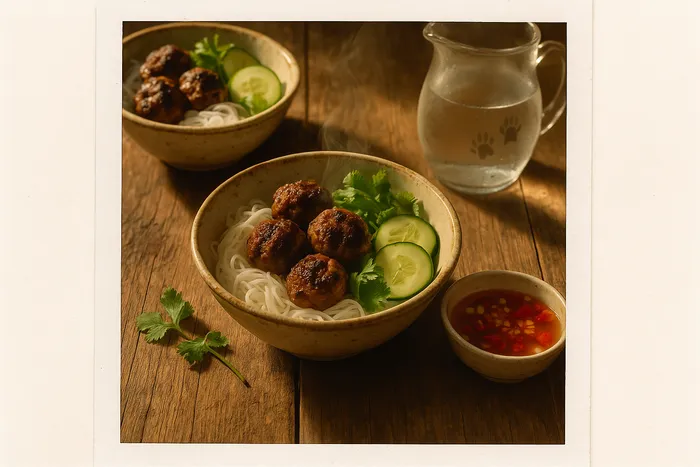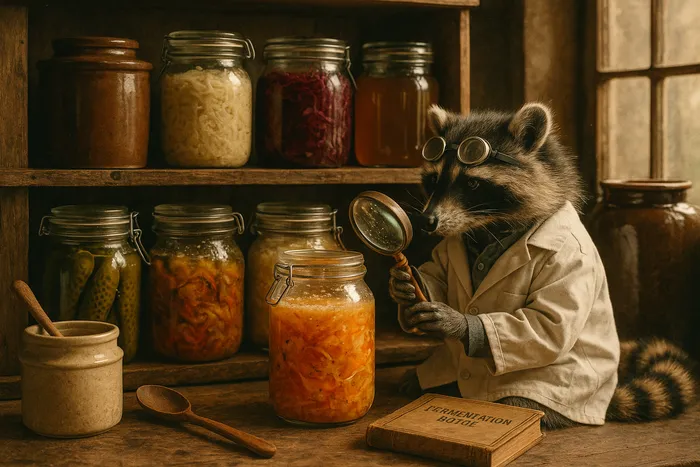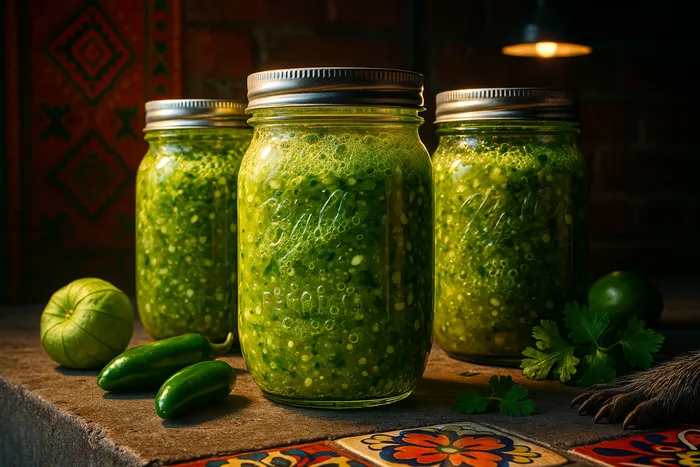side-dish
Preserved Lemons
Prep: 45 minutes
Cook: 1 month fermentation
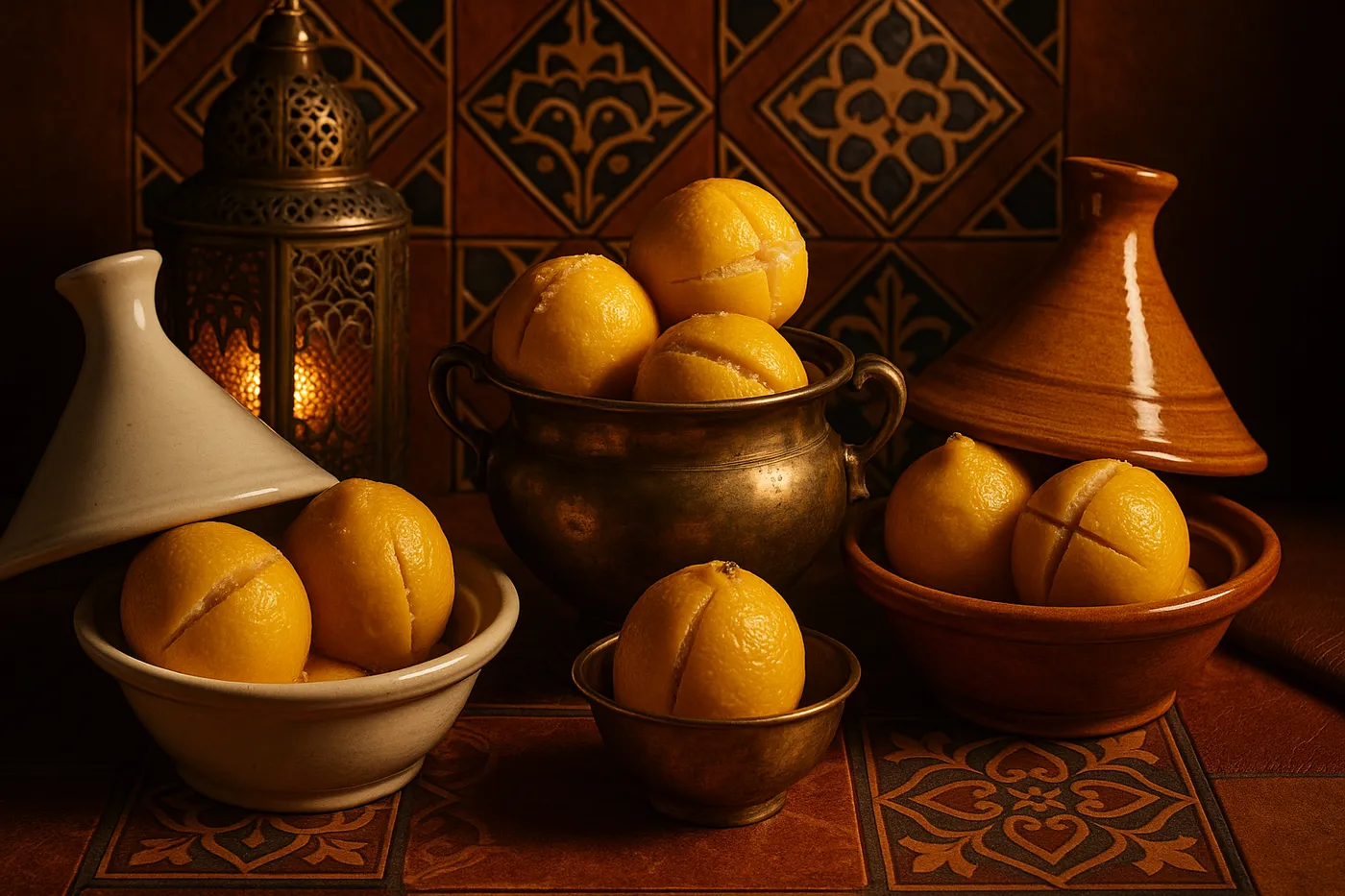
The first time I tasted preserved lemons, I was completely unprepared. That intensely salty, floral, almost perfumed flavor hit like a revelation — this wasn't just "lemony," it was something entirely different. The rind becomes silky and translucent, the harsh bite transformed into complex umami depth that makes everything it touches sing.
I started making my own after paying ridiculous prices for tiny jars at specialty stores. Turns out, preserved lemons might be the easiest ferment in the world: lemons, salt, time. No special equipment, no temperature control, no worrying about cultures. Just ancient preservation magic that turns citrus into liquid sunshine.
Now I keep a jar going year-round, using them in everything from salad dressings to roasted vegetables. They've become my secret ingredient — the thing that makes people ask "what IS that flavor?" when they taste my cooking.
The Simple Formula
🍋 8-10 organic lemons (unwaxed, if possible)
🧂 1/2 cup coarse sea salt (non-iodized)
🍋 Juice of 4-6 additional lemons
🫙 1-quart wide-mouth jar
Optional Aromatics
🌿 2 bay leaves
🌿 1 cinnamon stick
🌿 1 teaspoon coriander seeds
🌶️ 1-2 dried chili peppers
🧄 3-4 cloves garlic
The beauty is in the simplicity — just lemons and salt create the magic. Aromatics add complexity but aren't necessary for perfect preserved lemons.
Fermentation Timeline
gantt
title Preserved Lemon Timeline
dateFormat HH:mm
axisFormat %d days
section Active Prep
Score & Salt Lemons :00:00, 20m
Pack Jar & Add Brine :00:20, 10m
Weight Down :00:30, 5m
section Fermentation
Room Temp Ferment :00:35, 7d
Move to Fridge :crit, 7d, 1h
Ready to Use :milestone, 21d, 0
Peak Flavor :milestone, 42d, 0
Technique Flowchart
flowchart TD
subgraph Prep ["🍋 Lemon Prep"]
A[Sterilize Jar] --> B[Wash Lemons]
B --> C[Score X-Pattern<br/>½ inch from bottom]
C --> D[Open Like Flower]
end
subgraph Pack ["🧂 Salt & Pack"]
E[Stuff with Salt<br/>1-2 tbsp each] --> F[Press into Jar<br/>Release juices]
F --> G[Add Aromatics<br/>Between layers]
end
subgraph Seal ["🫙 Finish"]
H[Top with<br/>Fresh Lemon Juice] --> I[Weight Down]
I --> J[Cover Loosely]
J --> K[Room Temp 1 Week]
end
D --> E
G --> H
K --> L[Move to Fridge]
style C fill:#FFD93D
style F fill:#FF6B6B
style I fill:#4DABF7
The Process
-
Prepare your workspace: Sterilize jar and utensils. Clean lemons thoroughly — you're eating the peels, after all.
-
Score the lemons: Cut each lemon from the top toward the bottom, stopping about 1/2 inch from the bottom. Make a second cut perpendicular to the first, creating an X. The lemon should open like a flower but stay connected at the base.
-
Stuff with salt: Open each scored lemon and pack generously with salt — about 1-2 tablespoons per lemon. The salt draws out juices and creates the brine that preserves.
-
Pack the jar: Press each salted lemon into the jar, pushing down firmly to release juices. Add any aromatics between layers. Pack tightly — you want no air pockets.
-
Top with brine: Fresh lemon juice should cover the lemons completely. If not, add fresh-squeezed juice until submerged. Leave 1 inch headspace.
-
Weight down: Use a smaller jar or fermentation weight to keep lemons submerged. Anything exposed to air can develop mold.
-
Ferment and wait: Cover loosely (pressure needs to escape) and leave at room temperature. After 1 week, they can go in the fridge. They're ready to use after 3-4 weeks but improve with age.
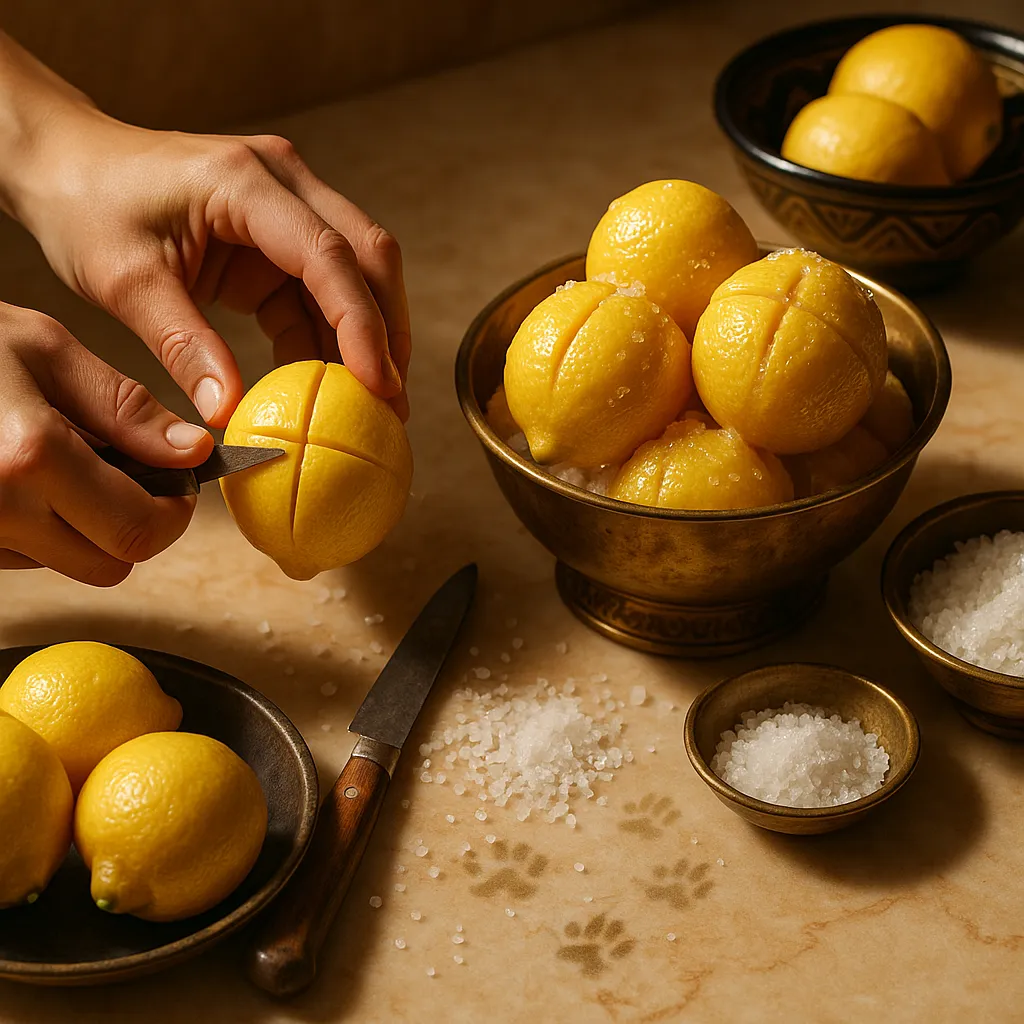
Using Preserved Lemons
The magic is all in the rind — discard the pulp and use only the silky, translucent peel. Rinse if desired (I usually don't), then:
- Chop finely for salad dressings and marinades
- Slice thin for grain salads and couscous
- Blend whole into harissa or herb pastes
- Stuff inside chicken or fish before roasting
- Add to tagines and slow-cooked stews
Classic Combinations
Moroccan Chicken Tagine: Preserved lemon + olives + saffron Roasted Vegetables: Cauliflower or carrots with preserved lemon and herbs Grain Salads: Quinoa or bulgur with preserved lemon and fresh herbs Fish: Baked with preserved lemon, capers, and olive oil Pasta: Simple aglio e olio elevated with minced preserved lemon
Troubleshooting
White film on surface? Usually harmless kahm yeast. Skim off and ensure lemons stay submerged.
Lemons floating? Not enough salt or brine. Add more salt and juice, weight down better.
Too salty? Rinse before using, or use less salt next time. Some recipes use up to 1 cup salt — experiment to find your preference.
Soft texture? Normal! Fermentation softens the peels. If they're mushy, they may have been over-fermented or stored too warm.
Variations and Experiments
Quick Preserved Lemons (2 weeks)
Cut lemons into wedges, pack with salt, add boiling water to cover. Ready in 2 weeks but won't have the same complex flavor as traditional method.
Meyer Lemon Version
Sweeter, more floral flavor. Use less salt as Meyer lemons are more delicate.
Lime Preserves
Follow same method with limes. Popular in Persian and Indian cooking.
Spiced Variations
- Moroccan: Bay leaves + cinnamon + coriander
- Middle Eastern: Cardamom + rose petals
- Indian: Fenugreek + turmeric + mustard seeds
- Mediterranean: Thyme + oregano + garlic
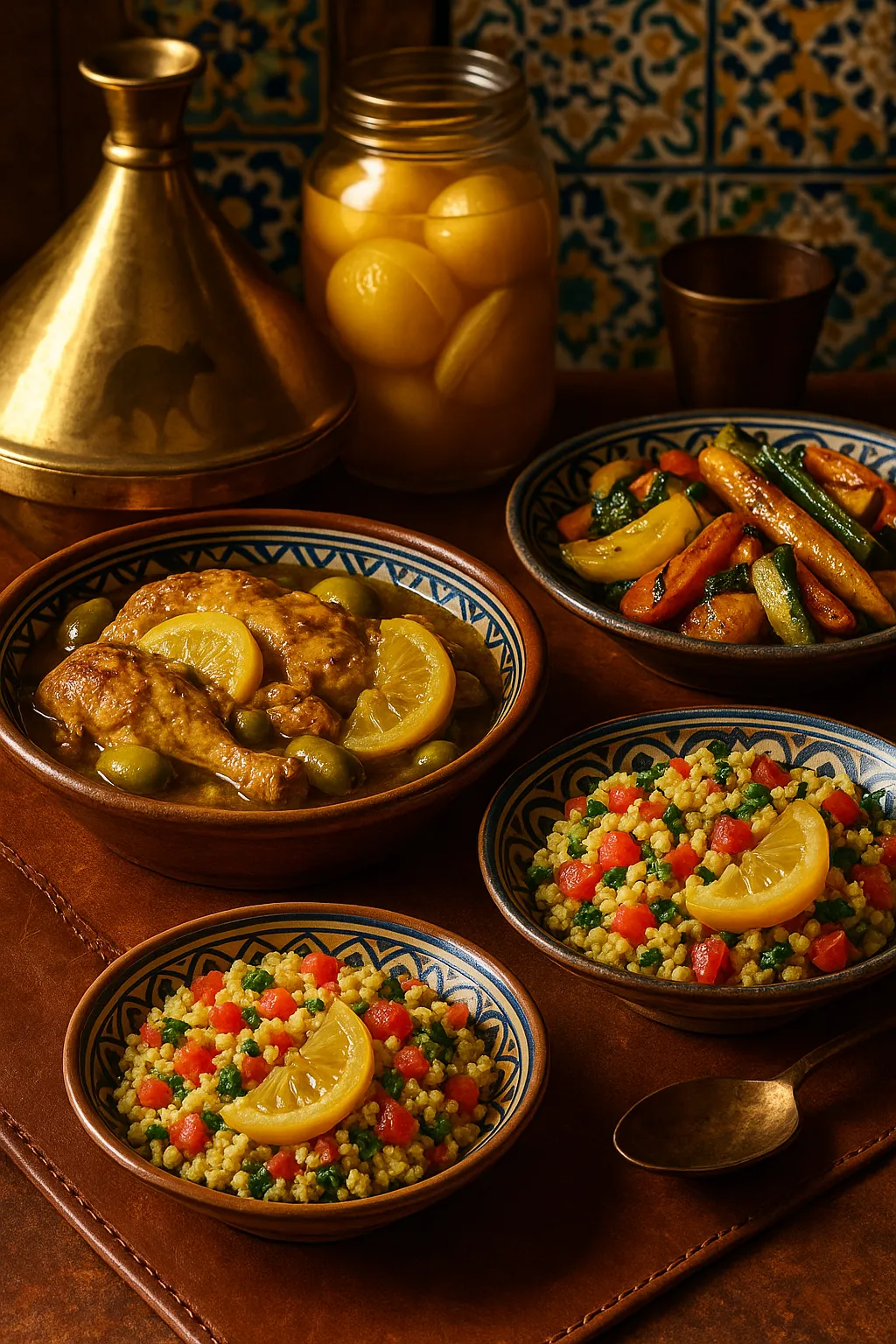
The Science
Salt draws moisture from lemons, creating a concentrated brine that prevents harmful bacteria while allowing beneficial lacto-fermentation. The high salt content (around 25%) creates an environment where only salt-tolerant bacteria can survive.
The fermentation is anaerobic — happening without oxygen under the brine. Beneficial bacteria consume natural sugars, producing lactic acid that preserves the lemons and creates complex flavors impossible to achieve any other way.
Storage and Lifespan
Properly made preserved lemons keep for months in the refrigerator. The flavor continues developing over time — some say they're best after 6 months. Always use clean utensils when removing lemons to prevent contamination.
The brine is precious too — use it in:
- Salad dressings (replaces both salt and lemon juice)
- Marinades for meat or vegetables
- Cocktails (dirty martini with preserved lemon brine!)
- Bloody Marys or other savory drinks
Cultural Context
Preserved lemons are essential in North African cuisine, particularly Moroccan cooking. They appear in classic tagines, salted cod dishes, and countless vegetable preparations. The technique dates back centuries — a way to preserve abundant citrus harvests for year-round use.
In Persian cuisine, they're called "limu amani" and used in rice dishes and stews. Indians make similar lime pickles with spices. The principle — salt-fermenting citrus — appears across many cultures with local variations.
Beyond Basic Preserved Lemons
Once you master the technique, experiment with:
- Mixed citrus: Oranges, limes, and lemons together
- Buddha's hand citron: If you can find it — all peel, no pulp
- Grapefruit: Quarters work well for larger fruit
- Key limes: Whole small limes preserved beautifully
Making It a Practice
Start a jar every few months to ensure constant supply. Gift jars to cooking friends — they make beautiful, practical presents. Include a recipe card with serving suggestions.
Keep a preserved lemon diary noting which batches you prefer. Different salt types, lemon varieties, and fermentation times all affect flavor. Find your perfect formula through experimentation.
The Preserved Life
Having preserved lemons on hand changes how you cook. That jar in the fridge becomes your flavor secret weapon — the ingredient that transforms simple dishes into something special. Roasted chicken becomes exotic. Basic vinaigrette gains complexity. Grain salads taste restaurant-quality.
The process teaches patience and trust. Unlike fresh ingredients that deteriorate, preserved lemons improve with time. They're ready when they're ready, and that timing can't be rushed. It's fermentation wisdom: good things come to those who wait.
Building Your Fermentation Practice
Preserved lemons make an excellent introduction to salt fermentation. The technique applies to many vegetables:
- Homemade Sauerkraut - The classic salt fermentation
- Fermentation Journey - Complete fermentation guide
- Kombucha Brewing - Cultured fermentation techniques
May your lemons preserve beautifully and your dishes gain that ineffable preserved lemon magic!






